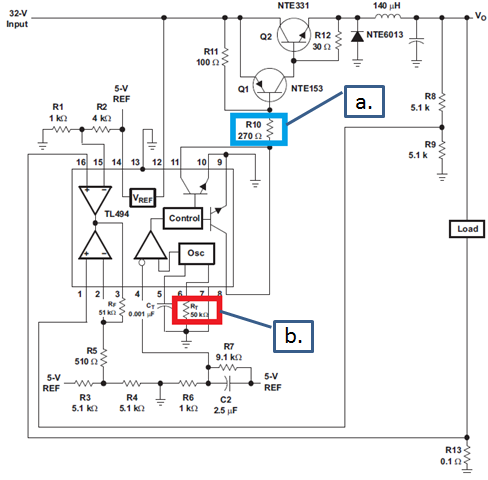Dear, All
Customers are considering replacing uPC494 with TL474.
As a result of the experiment, it was found that there is a difference in characteristics at low temperature.
But I do not know the reason.
Please tell me the possible causes.
Operating conditions:
Vin: 17V to 29V
Vout: 2V
Iout: 200mA Max
Condition on occurrence of phenomenon:
Ta = -10 degrees C
Vin = 19.2V
Iout = 165mA
When TL494 is used, it drops to 1.924V in one device and it drops to 1.890V in other devices.
When uPC494 is used, about 2V output is maintained.
Even when TL494 is used, when Vin is 24V, the output voltage is about 2V.
Even when Vin is 19.2V, the output voltage is about 2V when the load current is 50mA.
The circuit configuration is as follows, but the constants of the resistance etc. used are changed.
In the customer's circuit, the following resistance values are used for the figures a. And b.
a. = 2.2 kOhm
b. = 5.6 kOhm
It was found that by changing the resistance value as follows, it is possible to make the characteristics the same as those of uPC494.
a. : 2.2 kOhm --> 910 Ohm
b. : 5.6 kOhm --> 1.6 kOhm
Only one change alone did not result in the same characteristics.
Both of them have the same characteristics as uPC494 only after changing the resistance value.
There is no particular difference in the prescribed value of the data sheet, and there is only a slight difference in the typical value of the output voltage, so the reason is not known.
Customers say they can not change without knowing the reason.
Please tell me the reason for being estimated.
Thanks, Masami M.


